Open Journal of Plant Science
Preparation and characterization of vermicompost made from different sources of materials
Robe Elema Wako*
Cite this as
Wako RE (2021) Preparation and characterization of vermicompost made from different sources of materials. Open J Plant Sci 6(1): 042-048. DOI: 10.17352/ojps.000031The study was conducted during 2020, at Fedis district of East Hararghe Zone, Oromia National Regional State; Ethiopia. Composting is a process where waste organic materials derived from plants and/or animals are decomposed by microbial action under aeration to produce a friable homogenous product that is added to soil. Biological, chemical and physical degradation of the soil and reduced yields of the most major crops at Fadis district was the major problem of the area .This was deuto the reliance of farmers on chemical fertilizer alone, and continuous depletion of soil organic matter. Thus why this study was designed with the objectives of to prepare and characterize nutrient composition of different vermicompost and to identify quality vermicompost for crop production. Different source of materials like Wheat, Sorghum, Soybean residues, Haricot bean, Maize stock, chick pea, Finger millet, Groundnut residues, Rhodes grass and Bracharia were used to prepare vermicompost. The collected substrates were chopped and added to the worm bin. Animal manure was added to all substrates in equal amount. The ratio of 1:2was used and Pit method was used for vermi compost preparation. Composite vermi compost sample were analyzed for essential nutrients and chemical properties of compost. The Electrical conductivity of vermicompost under this study was falls in the ranges of 3.22 dS m--6.7 dS m-1 this alkalinity range is suitable for growth of most crops. According to result (Figure 1), the pH value was in the ranges of 7.2-8.4. A pH greater than 8.5 and electrical conductivity of 8 dS m-1 were found to harm both plants and earthworms. Out of all analyzed vermicompost, the highest total nitrogen (TN3.21%) was recorded from vermicompost made from ground nut, soybean (2.93%) and haricot bean (2.73%) substrates and the highest available phosphorus (787.75 mg/kgV. Compost) and 787.75mg/kg Compost) was obtained from vermicompost of haricot bean and chick pea followed by wheat (715.93) respectively. This was the tripled and doubled of TN% available in the soil and conventional compost. Their variation might be attributed to nature of different substrates. Vermi compost made from haricot bean was rich in all essential nutrients and other quality parameters and the most quality vermicompost for plant growth followed by soya bean and chick pea.
Introduction
Environmental degradation is a major threat challenging the worldwide, and the extensive use of chemical fertilizers contributes largely to the deterioration of the environment, loss of soil fertility, less agricultural productivity, soil degradation and Climate change due to a number of reasons. For instance production of degradable organic waste and its safe disposal influence on soil fertility [1]. Meanwhile the transformation of degraded soils by protecting topsoil and sustainability of productive soils is a major concern at the international level. Ecological Agriculture”, which is by definition different from “Organic Farming” that was focused mainly on production of chemical free foods. Ecological agriculture emphasizes on total protection of food, farm & human ecosystems while improving soil fertility & development of secondary source of income for the farmers [2]. Heavy use of agrochemicals since the “green revolution” of the 1960s boosted food productivity at the cost of environment & society. It killed the beneficial soil organisms & destroyed their natural fertility, impaired the power of ‘biological resistance’ in crops making them more susceptible to pests & diseases. Chemically grown foods have adversely affected human health. The scientific community all over the world is desperately looking for an economically viable, socially safe & environmentally sustainable alternative to the agrochemicals is vermicompost [3].
Vermicomposting is defined as a bio-oxidative process in which detritions earthworms interact with microorganisms and other fauna within the decomposer community, thus accelerating the stabilization of organic matter (OM) and greatly modifying its physical and biochemical properties of soil (Domínguez, 2004). Epigeic earthworms are natural colonizers of organic waste and the following properties make them suitable for vermicomposting: high rates of consumption, digestion and assimilation of OM; tolerance to a wide range of environmental factors; short life cycle, high reproductive rates, and endurance and resistance to handling [4]. Few epigeic earthworms display all these characteristics, and only four species have been extensively used in vermicomposting facilities. Eisenia andrei, Redworms [Eisenia fetida], ,em>Perionyx excavatus
and Eudrilus eugeniae [4]. Red worms are local endemic species therefore appears to be appropriate for vermicomposting; as such species are well adapted to different environmental conditions.Vermicomposting differs from composting in several ways [5]. A mesophilic process utilizes microorganisms and earthworms that are active at 10°C to 32°C (not ambient temperature but temperature within the pile of moist organic material). The process is faster than composting; because the material passes through the earthworm gut that diverse biological processes involved in the recycling and recovery of waste components is of increasing importance for more sustainable production and consumption systems. In short, earthworms through a type of biological alchemy are capable of transforming garbage into “gold” [6,7].
According to Ruz-Jerez and Tillman R [8], Vermicompost is an excellent soil additive made up of digested compost and Worm castings are much higher in nutrients and microbial life; therefore, considered as a higher value product and Worm castings product contain up to 5 times the plant available nutrients found in average potting soil mixes. Chemical analysis of the castings was conducted and found that it contains 5 times the available nitrogen, 7 times the available potash and 1.5 times more calcium than that found in 15 cm of good top soil. In addition, the nutrient life is up to 6 times more in comparison to the other types of compost.
According to Reinecke, et al. [9] report phosphorous while passage through gut of worms is converted to the plant available forms that it is usually considered as a limiting element for plant growth. Therefore, any process that significantly increases phosphorous availability through plants and organic matter is very important for agriculture. The combination of nutrients and microbial organisms are essential for growing healthy and productive plants. Vermicompost not only adds microbial organisms and nutrients that have long lasting residual effects, it also modulates structure to the existing soil, increases water retention capacity. Vermicompost may also have significant effects on the soil physical properties. According to Ferreras, et al. [10] and Marinari, et al. [11]observation indicates, addition of 20 t.ha−1 vermicompost to an agricultural soil in two consecutive years significantly improved soil porosity and aggregate stability and the number of large elongated soil macro pores increased significantly after a single application of a dose of vermicompost equivalent to 200 kg·ha−1 of nitrogen to a corn field.
Similarly, in description of Gopinath, et al. [12] a significant decrease in soil bulk density and a significant increase in soil pH and total organic carbon after application of vermicompost in
In natures as a laboratory earthworm convert organic waste into renewable energy production and enhance biotechnological process of composting action for production of better product which are sources of plant nutrients and essential for maintaining soil productivity with Macro and micronutrients present in organic waste represent a low-cost, environmentally friendly alternative to mineral fertilizers for crop growth and recovery of soil body. Microorganism and earthworms are important biological organisms helping nature with nature to maintain nutrient flow from one system to another and recover the nature also minimize environmental degradation.
The earthworm population is about 8-10 times higher in uncultivated area so most of North-East and central part of Ethiopia suffer under soil degradation and loss of nutrients due to various reasons (Cultural beliefs and remains of early extension, Land tenure systems, Scarcity of organic materials, High population densities and deforestation, Climate change, Inadequate use of synthetic fertilizers, Low availability of organic soil amendments and fertilizers etc). Thus, clearly designate that earthworm population decreases as soil quality diminution and it can be used as a sensitive indicator of soil degradation [2]. Thus Eastern Hararghe zone fail under low productivity situation. Biological, chemical and physical degradation of the soil and reduced yields of the most major crops at fadis district was the major problem of the area. This was deuto the reliance of farmers on chemical fertilizer alone, and continuous depletion of soil organic matter. So in order to reverse such problem, organic amendments are necessary in which economic gain and ecological balance achieved while also maintaining soil health and fertility .Therefore this study was designed with the objectives of to prepare and characterize nutrient composition of different vermi –compost and to identify quality vermi- compost for crop production.
Objective
❖ To prepare and characterize nutrient composition of different vermicompost.
❖ To identify quality vermicompost of different sources that contains high composition of essential nutrients.
Material and methods
Location
The study was conducted at Fedis district of East Hararghe Zone, Oromia Regional State; Ethiopia. It is located in the eastern part of the country at 550 km from Addis Ababa the capital city of Ethiopia and 24 km from Harar town in the southern direction (Figure 1). The geographical location of the district is 80 22’ 0” and 90 14’ 0” N and 420 62’ 0” and 420 19’ 0” E. The altitude of the area ranges from 500-2100 meter above sea level (FWANRDO, 2017/18).
Climate and rain fall
According to FWANRDO (2017/18) report, the district has two basic agro-climatic conditions, namely Midland (39%), and lowland (61%). The district experience mean annual maximum and minimum rainfall, mean annual maximum and minimum temperature in the area were 850 to 650mm, 30.4°C, and 10.0°C, respectively. Accordingly, the district has a bimodal rainfall distribution pattern with heavy rains from April to June and long and erratic rains from August to October.
Design of vermiculture
The worm bin where the worms live and produce compost, shallow boxes were constructed in the house with the dimension of 0.5m of height, 0.6m of width and 1m of length from concrete cement.
Experimental materials and vermicompost preparation
The treatments consist of eleven types of feed materials were used as a treatment which undergone partial fermentation for 20 days with the combination ratio of crop residue (Dry Organic Waste) to animal manure 1: 2 on weight basis. Vermicompost was prepared from different substrate materials which was locally available(from farmers field and research station) such as wheat straw, maize stock, sorghum, haricot bean, soya bean, finger millet, chick pea, ground nut, and grasses like, elephant grass, Rhodes grass and Brach aria. A red worm (Eisenia fetida) was used as a decomposer. The collected substrates were chopped and added to the worm bin. Animal manure was added to all substrates in equal amount. However, plastic bag were used to apply the treatments/substrates. After all substrates chopped, they added to plastic bags and mixed with animal manure as a starter and sprayed with water to maintain optimum moisture for worms. The mixture of substrates was prepared from equal amount (3kg) and finally mixed with animal manures. Substrates of 3kg kg mixed with 2kg of animal manure were filled based on the volume of worm bin/plastic bag. After moisture optimized 180 earthworms was counted and added to every treatment. Bottom face of plastic bag was drilled to avoid water logging. Water was sprayed, as it needed to keep the optimum moisture status of the worm feed.
Parameters and test methods
The pH and Electrical Conductivity (EC) was analyzed using the - potentiometry (1:2.5) methods. And organic carbon was analyzed by using - Walkley and Black methods
Total nitrogen - Kjeldahal method
Available phosphorus by - Olsen method.
Cation Exchange Capacity (CEC) and Exchangeable cations K was analyzed by - neutral 1M ammonium acetate, neutral 1M ammonium acetate (by flame photometer) respectively. And Available K by - Morgan methods.
Treatment arrangements are as fallows
Design: RCBD with three replication of each and composite sample was analyzed at laboratory
Wheat straw
Sorghum residue
Soybean residue
Haricot bean residue
Maize stock
Chick pea residue
Finger millet residue
Groundnut residues.
Rhodes grass
Brach aria
Elephant grass
Data analysis
The collected data was subjected to SAS software 9.1 version
And the data was summarized and presented using graphs.
Result and discussion
Vermicompost analysis result
The collected vermicompost samples were analyzed for soil reaction (pH (H2O), Electrical conductivity, Available phosphorus, potassium, total nitrogen, exchangeable bases and CEC (cation exchange capacity) Figure 2.
Electrical Conductivity (EC) in ds/m, Total nitrogen % and soil pH
Electrical Conductivity (Ec) in ds/m: To identify the salinity hazard of a vermicompost, Electrical Conductivity (EC) measurements was conducted. The salt content can thus be estimated from the electrical conductivity of a vermicompost suspension in distilled water. The highest (6.7ds/m) and lowest (3.22ds/m) EC was obtained from wheat and chick pea straw respectively. This finding is in line with (Richards, 1954) [13], vermicompost made from Sorghum and mixed straw showed slightly saline while from haricot bean, grasses, and maize straw showed moderately saline. The increased EC(electrical conductivity) during the period of the vermicomposting processes is in consistence with that of earlier workers [14,15], which was probably due to the degradation of organic matter releasing minerals such as exchangeable Ca, Mg, K, and P in the available forms, that is, in the form of cations in the vermicompost [16,17].
Soil reaction of vermicompost (pH)
According to result table (1) the highest pH value was obtained from vermi compost of elephant grass followed by Rhodes grass, and soybean maize stock pH (8.4, 8.2, 8.1) respectively. On the other hand, the lowest pH value was measured from vermi compost made from Haricot bean substrates followed by wheat and sorghum substrate/residues pH value (7.2, 7.3 and 7.3) respectively. This finding is in line with, the study of Tekalign (1991) [18], p H ranged from moderately to strongly alkaline. Similarly Rogelio, et al. 2007; George W Dickerson 1994; EP. Jouquet, et al. 2013 [19,20] obtained similar results in which the pH status of vermicompost was ranged from 6.8-8.41. Also Padmavathiamma, et al. 2008 [21] reported that the pH of vermicompost ranged from neutral to alkaline. A pH greater than 8.5 and electrical conductivity of 8 dS m-1 were found to harm earthworms. Alkalinity and salinity are harmful to both earthworms and microorganism [22]. Thus the prepared vermicompost doesn’t have salinity/alkalinity problems. Fares, et al. (2005) found that the increased pH at the end of the composting process, was attributed to progressive utilization of organic acids and increase in mineral constituents of waste.
Total nitrogen of vermicompost
The highest (3.21%) total nitrogen was recorded from vermicompost made from ground nut soybean (2.93%) and haricot bean (2.73%) substrates/residues respectively. And the lowest total nitrogen was obtained from vermi compost made from maize stock (1.15%) Elephant grass (1.39%) and Rhodes grass (1.42%) respectively.
The variation of TN among the vermicompost attributed to the substrates digested by worms. Because different types of straw were contains different nitrogen contents. This was in line with the finding of S.Kalantari, et al. [23] reported that, 3.5TN% of the total nitrogen was recorded from vermicomost. George W. Dickerson [20] also obtain the total nitrogen recorded in vermicompost 1.94%. The current result also in line with the finding of [18] rating of total nitrogen in a soil, the TN(total nitrogen) in a vermicompost made from all substrates was high (>0.25%) and significantly greater than in a soil. Therefore vermicompost application to soil could increase total nitrogen. It was in agreements with studies of (Tigist, et al. 2017) revealed application of vermicompost could increase total nitrogen in a soil. Vermicompost made from groundnut, soybean and haricot bean was rich in TN% than the rest compost made from other materials Figure 3.
Available phosphorus
The analyzed result revealed that, the highest available phosphorus (787.75 mg/kgV. Compost) and 787.75mg/kg V.compost) was measured/obtained from vermicompost made from haricot bean and chick pea followed by wheat (715.93) respectively. And the lowest value was recorded from the vermi compost made from groundnut substrate/residues (406.88 mg/kgV. Compost) followed by Rhodes grass (512.44 mg/kgV. Compost) and maize stock (525.5 mg/ of kgV. Compost) respectively. Their variation might be attributed to nature of the substrates. The enhanced P level in vermicompost suggests phosphorous mineralization during the process. The worms during vermicomposting converted the insoluble P into soluble forms with the help of P-solubilizing microorganisms through phosphatases present in the gut, making it more available to plants (Padmavathiamma, et al. 2008, Ghosh, et al. 1999). When the values compared to soil, available phosphorous from vermicompost made from all substrates, especially from haricot bean vermicompost was very high. The current study was in agreement with the findings of Nagavallemma KP, et al. [24] reported that the available phosphorous in vermicompost was much higher than the soil and conventional compost. Thus, application of vermicompost could increase P content of the soil if the soil is deficient with phosphorus Figure 4.
Available potassium (K)
According to the result above on Figure 5, the highest available potassium was measured from vermi compost made from Elephant grass (133500 K2Omg/kg V.Compost) substrates followed by finger millet (110000 K2Omg/kg V.Compost), wheat and groundnut respectively. And the lowest available potassium was obtained from sorghum treatments/residues followed by maize stock treatments.
According to previously, conducted study the available potassium in vermicompost was stated by S.Kalantari, et al. [23] that was 950.5K2Omg/kg and C. Tognettia, et al. 2013 backyard vermicompost total potassium content was 8.2g/kg means 8200mg/kg that contradict with S. Kalantari. The study conducted by C. Tognettia, et al. (2013) and George W. Dickerson [20] has close relation to this study which was 0.7% and 8.3g/kg when converted to similar unit. In addition to this the result obtained in this study is available in range stated by Nagavallemma KP, et al. [24] which was 1500-7300mg/kg of vermicompost.
Cation Exchange Capacity (CEC) of vermi compost made from different crop residues
Cation Exchange Capacity (CEC): According to the result, vermicompost made from sorghum and haricot bean contain the highest Cation Exchange Capacity (CEC), 57.15 cmol+ kg/V.compost) and followed finger millet 57.08(cmol(+)/kg compost. But, the lowest CEC (54.24 cmol+kg-1) obtained from soybean followed by Elephant grass (55.26 cmol+kg/V. compost).This result was in agreement with finding of Hazelton and Murphy (2007), CEC rating indicated the CEC of vermicompost made from all substrates was rated to very high status. This result was also in agreements with the study conducted by EP. Jouquet, et al. (2013) which was 57.8 cmol+ kg-1 .Cation exchange capacity is the capacity of the soil to hold and exchange cations. If the CEC of a soil is low, the soil is infertile soil. Therefore application of vermicompost made from all substrates could increase CEC content of the soil in areas where soil with low CEC.
Conclusion and recommendation
Vermicompost made from different source of material have different nutrient contents based on source of feed for vermi worm. Highest and lowest pH value was obtained from vermi compost of elephant grass and Haricot bean substrates 8.4, 7.2 respectively. The pH value of this study was in range of 7.2-8.4 which falls under slight alkalinity range and suitable for any plant growth. This study revealed that, the electrical conductivity of vermicompost made from different source of materials was in a ranges of 3.22 ds/m-6.7ds/m (Figure 1). Vermicompost made from groundnut, soybean and haricot bean was rich in TN% than the rest compost made from other materials respectively. The highest (3.21%) total nitrogen was recorded from vermicompost made from ground nut, followed by soybean (2.93%), haricot bean (2.73%) and chick pea (2.62%) substrates/residues respectively. And the lowest total nitrogen was obtained from maize stock (1.15%) Elephant grass. TN% of current study was in the ranges of 1.15%-3.21%. Available phosphorus of vermicompost from different source of material was falls in the range of 406.88p mg/kgV. Compost-787.75 P mg/kg Compost. The highest available potassium was measured from vermi compost made from Elephant grass (133500 Kmg/kg Compost) substrates followed by finger millet (110000 K2Omg/kg Compost), wheat and groundnut respectively. And the lowest available potassium was obtained from sorghum treatments/residues followed by maize stock treatments. The CEC of all vermicompost under this study was in a ranges of (54.24 cmol+kg-vermi compost (57.15cmol+ kg/V.compost). According to this study, vermi compost made from Haricot bean was the most quality vermicompost than the rest in terms of all quality parameters followed vermi compost of Chick pea substrates. According to this study, around 1.2t/ha of vermicompost can replaces the commercial fertilizer (blanket recommendation.) This finding is in line with Derrib kifle, et al. [25] Therefore, vermicompost could be used as source of macro nutrients and organic fertilizers for soils deficient with macro nutrients [26-33].
Recommendation
Farmers should use vermi compost instead of heavy commercial fertilizers. Research center, NGO’s and office of agriculture should create awareness on preparation and utilization of vermi compost. For further studies, verification of this result, application rate of vermicompost and their effect on soil physic chemical properties under field condition should be done. Farmers should use vermicopost made from haricot bean followed by chick pea and soya bean based on the availability of composting materials.
- Inbar Y, Chen Y, Hadar Y (1993) Recycling of Cattle Manure: The Composting Process and Characterization of Maturity. Journal of Environmental Quality 22: 875-863. Link: https://bit.ly/3gdif3R
- Devi D, Agarwal SK, Dayal D (1998) Indian Journal of Agronomy. 43: 469-473.
- US Board of Agriculture (1980) Report and recommendations on organic farming—Case studies of 69 organic farmers in USA. Publication of US Board of Agriculture. Link: https://bit.ly/3mTq7ZK
- Domínguez J, Edwards CA (2010) Biology and ecology of earthworm species used for vermicomposting, In: C.A. Edwards, N.Q. Arancon, R.L. Sherman (Eds.), Vermiculture Technology: Earthworms, Organic Waste and Environmental Management, CRC Press, Boca Raton, Florida 25-37. Link: https://bit.ly/32qdImh
- Gandhi M, Sangwan V, Kapoor KK, Dilbaghi N (1997) Composting of household wastes with and without earthworms. Environment and Ecology 15: 432-434.
- Vermi 2001; Tara 2003; Gandhi 1997 et al. 1997; Ruz-Jerez et al. (1992).
- Tara C (2003) Vermicomposting. Development Alternatives (DA) sustainable livelihoods. http://www.dainet.org/livelihoods/default.htm.
- Ruz-Jerez BE, Ball PR, Tillman RW (1992) Laboratory assessment of nutrient release from a pasture soil receiving grass or clover residues, in the presence or absence of Lumbricus rubellus or Eisenia fetida. Soil Biology and Biochemistry 24: 1529-1534. Link: https://bit.ly/3e5MEyb
- Reinecke AJ, Viljoen SA, Saayman RJ (1992) The suitability of Eudrilus eugenie, Perionyx excavatus and Eisenia fetida (Oligochaeta) for vermicomposting in southern Africa in terms of their temperature requirements. Soil Biology and Biochemistry 24: 1295-1307. Link: https://bit.ly/32nieC0
- Ferreras L, Gomez E, Toresani S, Firpo I, Ro-tondo R (2006) Effect of organic amendments on some physical, chemical and biological properties in a horti- cultural soil. Bioresource Technology 97: 635-640. Link: https://bit.ly/3dlcGhO
- Marinari S, Masciandaro G, Ceccanti B, Grego S (2000) Influence of organic and mineral fertilizers on soil biological and physical properties. Bioresource Technology 72: 9-17. Link: https://bit.ly/3sosMLK
- Gopinath KA, Supradip S, Mina BL, Pande H, Kundu S, et al. (2008) Influence of organic amendments on growth, yield and quality of wheat and on soil properties during transition to organic production. Nutrient Cycling in Agroecosystems 82: 51-60. Link: https://bit.ly/3wUZyId
- Richards LA (1954) Diagnosis and Improvement of Saline and Alkali Soils. US Salinity Laboratory Staff, US Department of Agriculture, Washington DC. Link: https://bit.ly/3soySMc
- Kaviraj, Sharma S (2003) Municipal Solid Waste Management through Vermicomposting Employing Exotic and Local Species of Earthworms. Bioresource Technology 90: 169-173. Link: https://bit.ly/3wZX5w0
- Jadia CD, Fulekar MH (2008) Vermicomposting of vegetable waste: A bio physicochemical process based on hydro-operating bioreactor. African Journal of Biotechnology 8. Link: https://bit.ly/3agmkjY
- Guoxue L (2001) Vermicomposting of vegetable waste: A bio-physicochemical process based on hydro-operating bioreactor.
- Tognetti C, Laos F, Mazzarino MJ, Hernández MT (2005) Composting vs. Vermicomposting: A vermicomposting, In: C.A. Edwards, N.Q. Arancon, R.L. Sherman (Eds.), Vermiculture.
- Tekalign (1991) Describes procedures for the analysis of chemical constituents in soil, plant, water, fertilizer, animal manure and compost samples.
- Baez-Rogelio A, Morales-García YE, Quintero-Hernández V, Muñoz-Rojas J (2017) Next generation of microbial inoculants for agriculture and bioremediation. Microb Biotechnol 10: 19-21. Link: https://bit.ly/3ebCIDD
- Dickerson GW (1994) A Sustainable Approach to Recycling Urban and Agricultural Organic Waste. Link: https://bit.ly/3gs2YMP
- Padmavathiamma PK, Li LY, Kumari UR (2008) An experimental study of vermi-biowaste composting for agricultural soil improvement. Bioresource Technology 99: 1672-1681. Link: https://bit.ly/3e3EzdC
- Santamaria-RomeroS, Ferrera-Cerrato R, Almaraz-Suarez JJ, Galvis-Spinola A, Barois- Boullard I (2001) Dynamics and relationships among microorganisms, C-organicand N-total during composting and vermicomposting. Agrociencia-Montecillo, 35: 377-384.
- Kalantari S, Hatami S, Ardalan MM, Alikhani AH (2010) The effect of compost and vermicompost of yard leaf manure on growth of corn. 5: 1317-1323. Link: https://bit.ly/3uSZjv7
- Nagavallemma KP, Wani SP, Lacroix S, Padmaja VV, Vineela C, et al. (2004) Vermicomposting: recycling wastes into valuable organic fertilizer. Link: https://bit.ly/3mQ17Cx
- Kifle D (2017) Characterization of Vermicompost for Major Plant Nutrient Contents and Manuring Value.
- Domínguez J, Edwards CA, Subler S (1997) A comparison of vermicomposting and composting. BioCycle 4: 57-59. Link: https://bit.ly/2Q8rveL
- Edwards CA (1995) Historical overview of vermicomposting. BioCycle 6: 56-58. Link: https://bit.ly/3emm8RB
- Gandhi M, Sanghwan V, Kapoor KK, Dilbaghi N (1997) Composting of household wastes with and without earthworms. Environment and Ecology 15: 432-434. Link: https://bit.ly/3trLovK
- Golueke CG (1991) Understanding the process. In: Staff of BioCycle (Eds.). The BioCycle Guide to the Art and Science of Composting. The JG Press, Inc., Emmaus, Pennsylvania, USA. 14-27.
- Pajon S (2007) The Worms Turn-Argentina. Intermediate Technology Development Group. Case Study Series 4; Quoted in Munroe. https://bit.ly/3tnyH57
- Vermi Co (2001) Vermicomposting technology for waste management and agriculture: An executive summary. Vermi Co., Grants Pass. https://bit.ly/3x1cBHN
- Whalen JK, Parmelee WR, McCartnney AD, Vanarsdale JL (1999) Movement of nitrogen (n) from decomposing earthworm tissue to soil microbial and nitrogen pools. Soil Biology and Biochemistry 31: 487-492. Link: https://bit.ly/3afImDp
- Atiyeh RM, Subler S, Edwards CA, Bachman G, Metzger JD (2000) Effectsof Vermi-composts and Composts on Plant Growth in Horticultural Container Media and Soil. Pedo Biologia 44: 579-590. Link: https://bit.ly/3mPEvSs
Article Alerts
Subscribe to our articles alerts and stay tuned.
 This work is licensed under a Creative Commons Attribution 4.0 International License.
This work is licensed under a Creative Commons Attribution 4.0 International License.

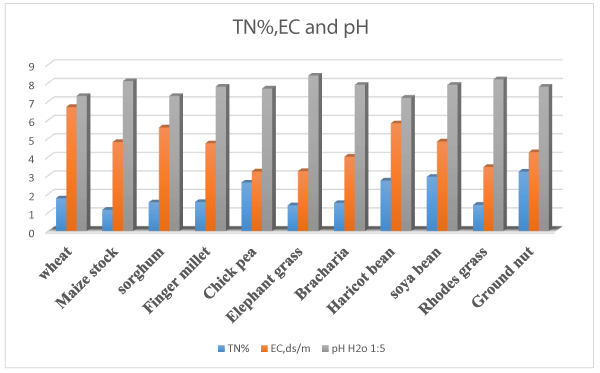
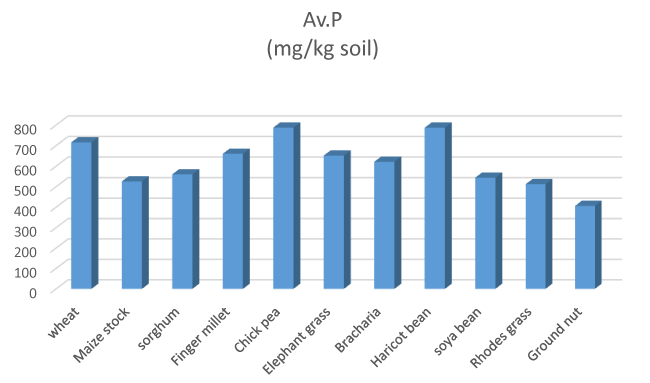
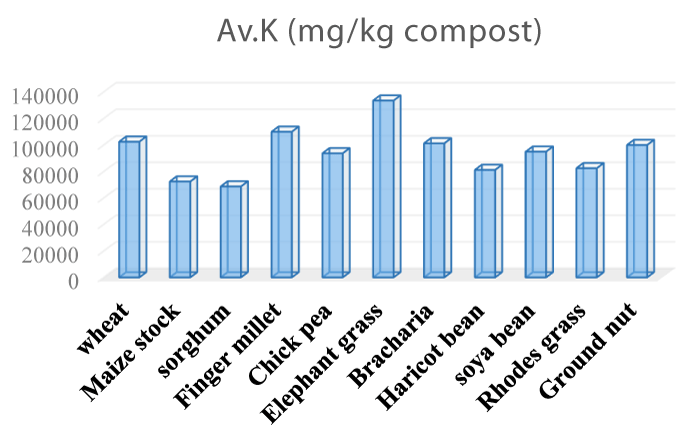
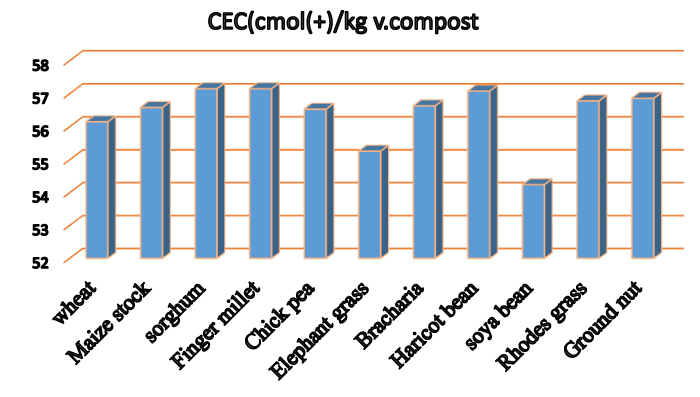
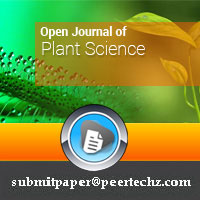
 Save to Mendeley
Save to Mendeley
